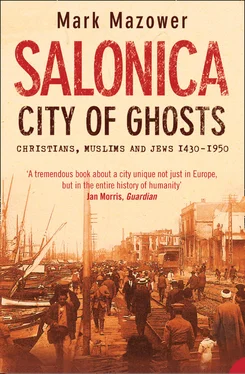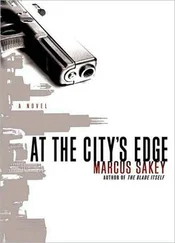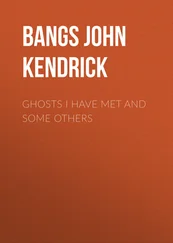Turks and Bulgarians figured prominently in the histories of Greece I had read, usually as ancestral enemies, but the Jews were in general remarkable only for their absence, enjoying little more than a bit-part in the central and all-important story of modern Greece’s emergence onto the international stage. In Salonica, however, it would be scarcely an exaggeration to say that they had dominated the life of the city for many centuries. As late as 1912 they were the largest ethnic group and the docks stood silent on the Jewish Sabbath. Jews were wealthy businessmen; but many more were porters and casual labourers, tailors, wandering street vendors, beggars, fishermen and tobacco-workers. Today the only traces of their predominance that survive are some names – Kapon, Perahia, Benmayor, Modiano – on faded shopfronts, Hebrew-lettered tombstones piled up in churchyards, an old people’s home and the community offices. There is a cemetery, but it is a postwar one, buried in the city’s western suburbs.
Here as elsewhere it was the Nazis who brought centuries of Jewish life to an abrupt end. When Kurt Waldheim, the Austrian politician who had served in the city as an army officer, was accused of being involved in the deportations, I came back to Salonica to talk to survivors of Auschwitz, resistance fighters, the lucky ones who had gone underground or managed to flee abroad. A softly-spoken lawyer stood with me on the balcony of his office and we looked down onto the rows of parked cars in Plateia Eleftherias [Freedom Square] where he had been rounded up with the other Jewish men of the city for forced labour. Two elderly men, not Jewish, whom I bumped into on Markos Botsaris Street, told me about the day the Jews had been led away in 1943: they were ten at the time, they said, and afterwards, they broke into their homes with their friends and found food still warm on the table. A forty-year-old woman who happened to sit next to me on the plane back to London had grown up after the war in the quarter immediately above the old Jewish cemetery: she remembered playing in the wreckage of the graves as a child, with her friends, looking for buried treasure, shortly before the authorities built the university campus over the site. Everyone, it seemed, had their story to tell, even though at that time what had happened to the city’s Jews was not something much discussed in scholarly circles.
A little later, in Athens, I came across several dusty unopened sacks of documents at the Central Board of Jewish Communities. When I examined them, I found a mass of disordered papers – catalogues, memoranda, applications and letters. They turned out to be the archives of the wartime Service for the Disposal of Israelite Property, set up by the Germans in those few weeks in 1943 when more than forty-five thousand Jews – one fifth of the city’s entire population – were consigned to Auschwitz. These files showed how the deportations had affected Salonica itself by triggering off a scramble for property and possessions that incriminated many wartime officials. I started to think about deportations in general, and the Holocaust in particular, not so much in terms of victims and perpetrators, but rather as chapters in the life of cities. The Jews were killed, almost all of them: but the city that had been their home grew and prospered.
The accusation that Waldheim had been involved in the Final Solution – unfounded, as it turned out – reflected the extent to which the Holocaust was dominating thinking about the Second World War. Sometimes it seemed from the way people talked and wrote as though nothing else of any significance had happened in those years. In Greece, for example, two other areas of criminal activity – the mass shootings of civilians in anti-partisan retaliations, and the execution of British soldiers – were far more pertinent to Waldheim’s war record. There were good reasons to deplore this state of cultural obsession. It quickly made the historian subject to the law of diminishing returns. It also turned history into a form of voyeurism and allowed outsiders to sit in easy judgement. I sometimes felt that I myself had become complicit in this – scavenging the city for clues to destruction, ignoring the living for the dead.
Above all, unremitting focus upon the events of the Second World War threatened to turn a remarkable chapter in Jewish, European and Ottoman history into nothing more than a prelude to genocide, overshadowing the many centuries when Jews had lived in relative peace, and both their problems and their prospects had been of a different kind. In Molho’s bookshop, one of the few downtown reminders of earlier times, I found Joseph Nehama’s magisterial Histoire des de Salonique , and began to see what an extraordinary story it had been. The arrival of the Iberian Jews after their expulsion from Spain, Salonica’s emergence as a renowned centre of rabbinical learning, the disruption caused by the most famous False Messiah of the seventeenth century, Sabbetai Zevi, and the persistent faith of his followers who followed him even after his conversion to Islam, formed part of a fascinating and little-known history unparalleled in Europe. Enjoying the favour of the sultans, the Jews, as the Ottoman traveller Evliya Celebi noted, called the city ‘our Salonica’ – a place where, in addition to Turkish, Greek and Bulgarian, most of the inhabitants ‘know the Jewish tongue because day and night they are in contact with, and conduct business with Jews.’
Yet as I supplemented my knowledge of the Greek metropolis with books and articles on its Jewish past, and tried to reconcile what I knew of the home of Saint Dimitrios – ‘the Orthodox city’ – with the Sefardic ‘Mother of Israel’, it seemed to me that these two histories – the Greek and the Jewish – did not so much complement one another as pass each other by. I had noticed how seldom standard Greek accounts of the city referred to the Jews. An official tome from 1962 which had been published to commemorate the fiftieth anniversary of its capture from the Turks, contained almost no mention of them at all; the subject had been regarded as taboo by the politicians masterminding the celebrations. This reticence reflected what the author Elias Petropoulos excoriated as ‘the ideology of the barbarian neo-Greek bourgeoisie’, for whom the city ‘has always been Greek’. But at the same time, most Jewish scholars were just as exclusive as their Greek counterparts: their imagined city was as empty of Christians as the other was of Jews. 2
As for the Muslims, who had ruled Salonica from 1430 to 1912, they were more or less absent from both. Centuries of European antipathy to the Ottomans had left their mark. Their presence on the wrong side of the Dardanelles had for so long been seen as an accident, misfortune or tragedy that in an act of belated historical wishful thinking they had been expunged from the record of European history. Turkish scholars and writers, and professional Ottomanists had not done much to rectify things. It suited everyone, it seemed, to ignore the fact that there had once existed in this corner of Europe an Ottoman and an Islamic city atop the Greek and Jewish ones.
The strange thing is that memoirs often describe the place very differently from more scholarly or official accounts and depict a society of almost kaleidoscopic interaction. Leon Sciaky’s evocative Farewell to Salonica , the autobiography of a Jewish boy growing up under Abdul Hamid, begins with the sound of the muezzin’s cry at dusk. Albanian householders protected their Bulgarian grocer from the fury of the Ottoman gendarmerie, while well-to-do Muslim parents employed Christian wet-nurses for their children and Greek gardeners for their fruit trees. Outside the Yalman family home the well was used by ‘the Turks, Greeks, Bulgarians, Jews, Serbs, Vlachs, and Albanians of the neighbourhood.’ And in Nikos Kokantzis’s moving novella Gioconda , a Greek teenage boy falls in love with the Jewish girl next door in the midst of the Nazi occupation; at the moment of deportation, her parents trust him with their most precious belongings. 3
Читать дальше











